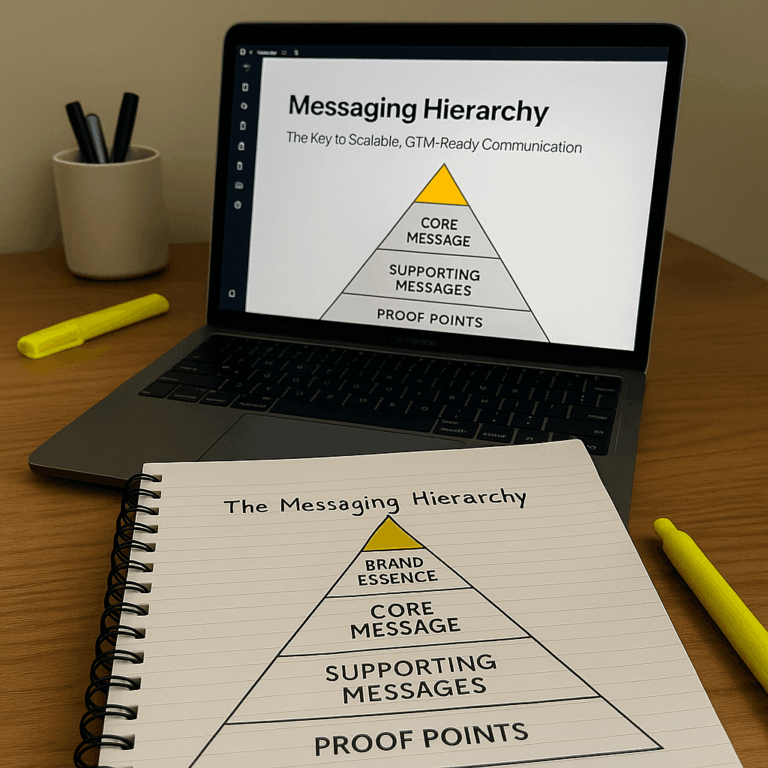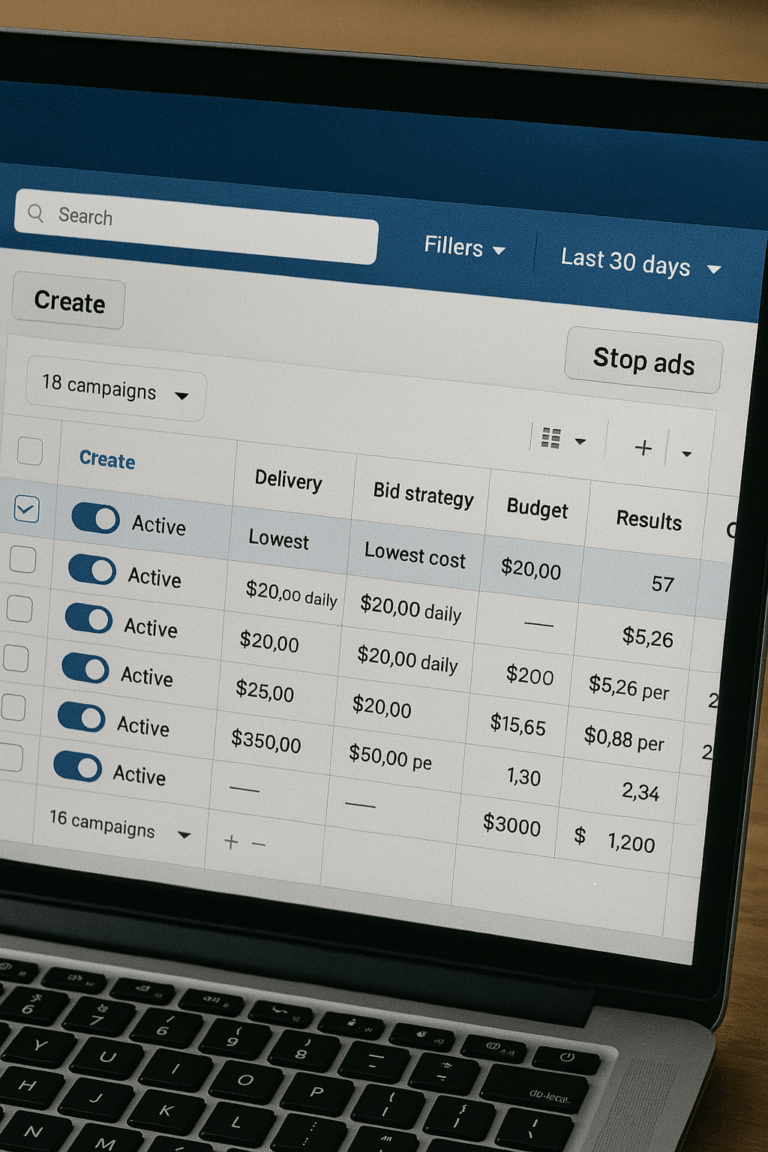Chapter 4: MMT Limitations and Alternative Approaches

While Matched Market Testing provides scientifically rigorous incrementality measurement, no single methodology can address every marketing measurement need. Understanding when MMT isn’t suitable and what alternatives to use instead is crucial for building a comprehensive measurement strategy that delivers reliable insights across all marketing scenarios.
Following the BEATS framework (Business > Experiments > Analyses > Tracking > Surveys), the most effective approach combines multiple measurement methods in a strategic hierarchy that matches the right tool to the specific business question, with MMT serving as the “Experiments” tier for your most critical marketing decisions.
Building Your Measurement Stack with the BEATS Framework
The BEATS Measurement Hierarchy in Practice
Business Metrics (Tier 1): Your P&L, revenue trends, and overall financial health should always be the ultimate arbiters of marketing effectiveness. If MMT shows positive incrementality but business metrics are declining, investigate external factors or measurement assumptions.
Experiments (Tier 2): MMT sits at this tier, providing scientifically rigorous causal measurement through controlled testing. Use MMT to validate the most critical marketing decisions where you need definitive proof of incrementality.
Analyses (Tier 3): Media Mix Modeling, run rate analyses, and statistical models provide strategic context that complements MMT findings. These approaches help identify testing priorities and provide historical perspective on marketing effectiveness.
Tracking (Tier 4): Platform attribution and UTM tracking offer granular, real-time optimization insights for day-to-day campaign management. While not suitable for major budget decisions, these tools excel at tactical optimization within validated channels.
Surveys (Tier 5): Brand lift studies and perception research provide valuable context for understanding awareness-driven campaigns but should never override experimental or business data when making investment decisions.
When to Combine Multiple Measurement Approaches
Major Budget Allocation: Start with business metrics and MMM for strategic direction, then validate key assumptions with MMT before reallocating significant budgets.
New Channel Testing: Use MMT for precise incrementality measurement, supplemented by tracking data for optimization insights and surveys for brand impact assessment.
Campaign Optimization: Rely primarily on tracking data for real-time adjustments, but validate optimization strategies with periodic MMT tests to ensure changes drive true incrementality.
Strategic Planning: Combine business trends, MMM insights, and MMT validation results to build comprehensive annual marketing strategies that balance proven performance with growth opportunities.
When MMT May Not Be Suitable
Non-Statistical Measurement Alternatives
While statistical methods like MMT provide the highest confidence for incrementality measurement, several non-statistical approaches offer valuable insights for specific marketing scenarios, particularly when statistical testing isn’t feasible or when measuring brand impact beyond direct conversions.
Brand Lift Surveys
Brand lift studies measure changes in brand awareness, consideration, and purchase intent before, during, and after campaign exposure. These surveys are particularly valuable for top-of-funnel campaigns where conversion-focused metrics may underestimate true marketing impact.
When to Use Brand Lift Surveys:
- Measuring awareness campaigns where direct attribution is limited
- Understanding brand perception changes from marketing activities
- Validating creative messaging effectiveness across different audiences
- Assessing competitive positioning and market share impact
Integration with MMT: Use brand lift results to provide context for MMT findings, especially when iROAS appears low but brand metrics show significant improvement. This combination helps justify continued investment in awareness campaigns that drive long-term value beyond the MMT measurement window.
Consumer Journey and Touchpoint Analysis
Qualitative research methods like customer interviews, focus groups, and journey mapping reveal how marketing influences purchase decisions in ways that statistical models may miss.
Key Applications:
- Understanding the role of different touchpoints in complex B2B sales cycles
- Identifying assisted conversions and cross-channel influence patterns
- Mapping customer decision-making processes for high-consideration purchases
- Discovering new attribution pathways that quantitative methods haven’t captured
Creative Testing and Sentiment Analysis
Beyond statistical performance measurement, creative effectiveness can be assessed through sentiment analysis, message recall testing, and creative scoring methodologies.
Measurement Approaches:
- Creative recall and message comprehension studies
- Emotional response testing for video and display creative
- Social listening and sentiment tracking around campaign launches
- Creative element testing (headlines, imagery, calls-to-action) through user research
Platform-Specific Lift Studies
Many advertising platforms offer their own brand lift measurement tools that, while not as rigorous as controlled MMT experiments, provide platform-specific insights into campaign effectiveness.
Examples and Applications:
- Facebook Brand Lift studies for awareness and consideration measurement
- YouTube Brand Lift for video campaign impact assessment
- LinkedIn Brand Awareness studies for B2B campaign effectiveness
- TikTok Brand Lift for reaching younger demographic segments
Integration Strategy: Use platform lift studies as directional indicators that can inform MMT test design or provide supplementary context for statistical findings. While these studies shouldn’t override experimental data, they offer valuable insights into campaign mechanics that pure performance metrics may miss.
MMT Technical Limitations
Insufficient Geographic Targeting
Some platforms and campaign types cannot be precisely controlled at the geographic level required for reliable testing.
Examples Include:
- Certain programmatic advertising platforms
- Influencer partnerships without geo-targeting capabilities
- National sponsorships or partnerships
- Platforms with limited geographic reporting
Platform-Specific Limitations:
- Amazon Search: Cannot run MMTs due to geographic targeting limitations
- Pinterest: Geographic data limitations prevent reliable MMT execution
- Influencer Marketing: Typically lacks geo-targeting capabilities
Spend Below Statistical Thresholds
Channels with very low spend may not generate sufficient signal for meaningful measurement, requiring alternative approaches.
When Spend is Too Low:
- Less than $20,000 monthly for channel-level testing
- Less than $40,000 monthly for tactic-level testing
- Fragmented spend across many small campaigns
- New channels in early testing phases
Highly Seasonal or Volatile Businesses
Businesses with extreme seasonality or high day-to-day volatility may need extended test periods or specialized analysis approaches to separate marketing effects from natural variation.
Challenging Business Types:
- Heavy holiday/seasonal dependence (e.g., Christmas retailers)
- Weather-dependent businesses
- Event-driven industries
- High daily volatility markets
External Factors That Can Impact Results
Competitive Activity
Major competitive campaigns, pricing changes, or market entries during test periods can influence results and require careful analysis interpretation.
Competitive Disruptions:
- Major competitor advertising launches
- Competitive pricing changes or promotions
- New competitor market entry
- Industry-wide promotional periods
Mitigation Strategies:
- Monitor competitive activity during test periods
- Adjust analysis for known competitive impacts
- Consider extended test periods during competitive instability
- Document competitive factors in results interpretation
Economic Conditions
Significant economic shifts can alter consumer behavior patterns, potentially affecting test validity.
Economic Factors to Monitor:
- Recession fears or economic uncertainty
- Inflation spikes affecting purchasing power
- Interest rate changes impacting consumer spending
- Local economic conditions in test markets
Supply Chain or Operational Disruptions
Product availability issues, shipping delays, or operational changes can mask marketing effectiveness, requiring careful analysis interpretation.
Operational Considerations:
- Product inventory limitations
- Shipping or delivery disruptions
- Website or platform technical issues
- Customer service capacity constraints
Alternative Measurement Approaches
Causal Impact Analysis (CIA)
Best For: Analyzing the impact of past changes or one-time events where controlled testing isn’t feasible
Use Cases:
- Measuring impact of completed campaigns
- Analyzing website redesign effects
- Evaluating pricing change impacts
- Assessing brand crisis or PR event effects
Advantages:
- Retrospective analysis capability
- No need for controlled test setup
- Can analyze historical events
- Faster implementation than MMT
Limitations:
- Cannot control for external factors as precisely as MMT
- Requires strong historical data
- Less robust for ongoing optimization
Media Mix Modeling (MMM)
Best For: Holistic analysis of channel effectiveness when individual channel testing isn’t practical
Use Cases:
- Understanding cross-channel interactions
- Long-term strategic planning
- Budget allocation across multiple channels
- Channels with insufficient spend for MMT
Advantages:
- Comprehensive cross-channel view
- Accounts for saturation and carryover effects
- Historical trend analysis
- External factor integration
Limitations:
- Requires 1-2 years of historical data
- Less precise than controlled experiments
- Cannot isolate specific tactical changes
- Model assumptions may not reflect reality
Platform Attribution Plus Calibration
Best For: Using platform data calibrated with periodic MMT results to maintain incrementality insight
Implementation:
- Use platform attribution for day-to-day optimization
- Calibrate with MMT results quarterly or bi-annually
- Apply incrementality factors to platform data
- Adjust for known platform attribution biases
Advantages:
- Real-time optimization capability
- Lower cost than continuous MMT
- Leverages existing platform data
- Practical for smaller budgets
Limitations:
- Relies on platform attribution accuracy
- Calibration may become outdated
- Less precise than direct MMT measurement
- Requires periodic MMT validation
Blended Measurement Approaches
Strategy: Combining multiple methodologies to create comprehensive measurement for complex marketing ecosystems
Typical Combinations:
- MMM for strategic planning + MMT for tactical validation
- Platform attribution for daily optimization + MMT for incrementality checks
- CIA for historical analysis + MMT for forward-looking tests
- Multiple measurement approaches for different channels based on feasibility
Choosing the Right Approach
Decision Framework
Use MMT When:
- Sufficient budget meets minimum thresholds
- Platforms support geographic targeting
- Business has stable baseline performance
- Controlled experimentation is possible
Use MMM When:
- Holistic cross-channel view needed
- Historical data analysis required
- Multiple channels need simultaneous evaluation
- Long-term strategic planning focus
Use CIA When:
- Analyzing past events or changes
- MMT setup not feasible
- Quick analysis needed for completed activities
- Evaluating one-time marketing events
Use Platform Attribution When:
- Real-time optimization required
- Budget constraints limit other approaches
- Tactical decision-making focus
- Combined with periodic incrementality validation
Building a Comprehensive Measurement Stack
Integrated Approach Benefits
- Short-term optimization: Platform attribution for daily decisions
- Medium-term validation: MMT for channel incrementality
- Long-term strategy: MMM for holistic planning
- Historical analysis: CIA for past event evaluation
Implementation Priorities
- Start with feasible approaches based on current budget and capabilities
- Build incrementally as spend and sophistication grow
- Integrate findings across methodologies for comprehensive insights
- Validate assumptions by comparing results across approaches
Avoiding Analysis Paralysis Through Measurement Hierarchy
Marketing teams often struggle with conflicting insights from different measurement approaches. The solution lies in following a clear hierarchy where higher-tier measurement methods take precedence when conflicts arise:
- When MMM suggests a channel isn’t incremental but your MMT test proves otherwise: Trust the experimental data
- When platform attribution shows strong ROAS but business metrics are declining: Trust the P&L and investigate attribution assumptions
- When surveys indicate brand lift but tracking shows poor performance: Use MMM or MMT to determine true business impact
This hierarchical approach eliminates guesswork by establishing clear decision-making protocols. Rather than being paralyzed by conflicting data, you can confidently prioritize insights based on their methodological rigor and relevance to the specific business question at hand.
Combining Statistical and Non-Statistical Methods
The most comprehensive measurement approach combines MMT’s causal rigor with non-statistical insights to create a complete picture of marketing effectiveness:
Holistic Campaign Assessment:
- MMT provides incrementality measurement for budget allocation decisions
- Brand lift surveys quantify awareness and consideration impact
- Customer research reveals qualitative journey insights
- Platform studies offer granular creative and audience insights
This integrated approach ensures you’re measuring not just immediate conversions, but also the full spectrum of marketing impact including brand building, customer journey influence, and long-term market positioning effects that drive sustainable business growth.
The key is recognizing that each measurement approach serves a distinct purpose within the broader framework. MMT excels at providing causal proof for major decisions, platform attribution optimizes day-to-day performance, and business metrics provide the ultimate validation of marketing effectiveness. Used together strategically, these approaches create a comprehensive measurement ecosystem that drives both tactical excellence and strategic growth.
Next Steps: Dive into the technical details with Market Selection and Synthetic Control Methods
Our Editorial Standards
Reviewed for Accuracy
Every piece is fact-checked for precision.
Up-to-Date Research
We reflect the latest trends and insights.
Credible References
Backed by trusted industry sources.
Actionable & Insight-Driven
Strategic takeaways for real results.






















